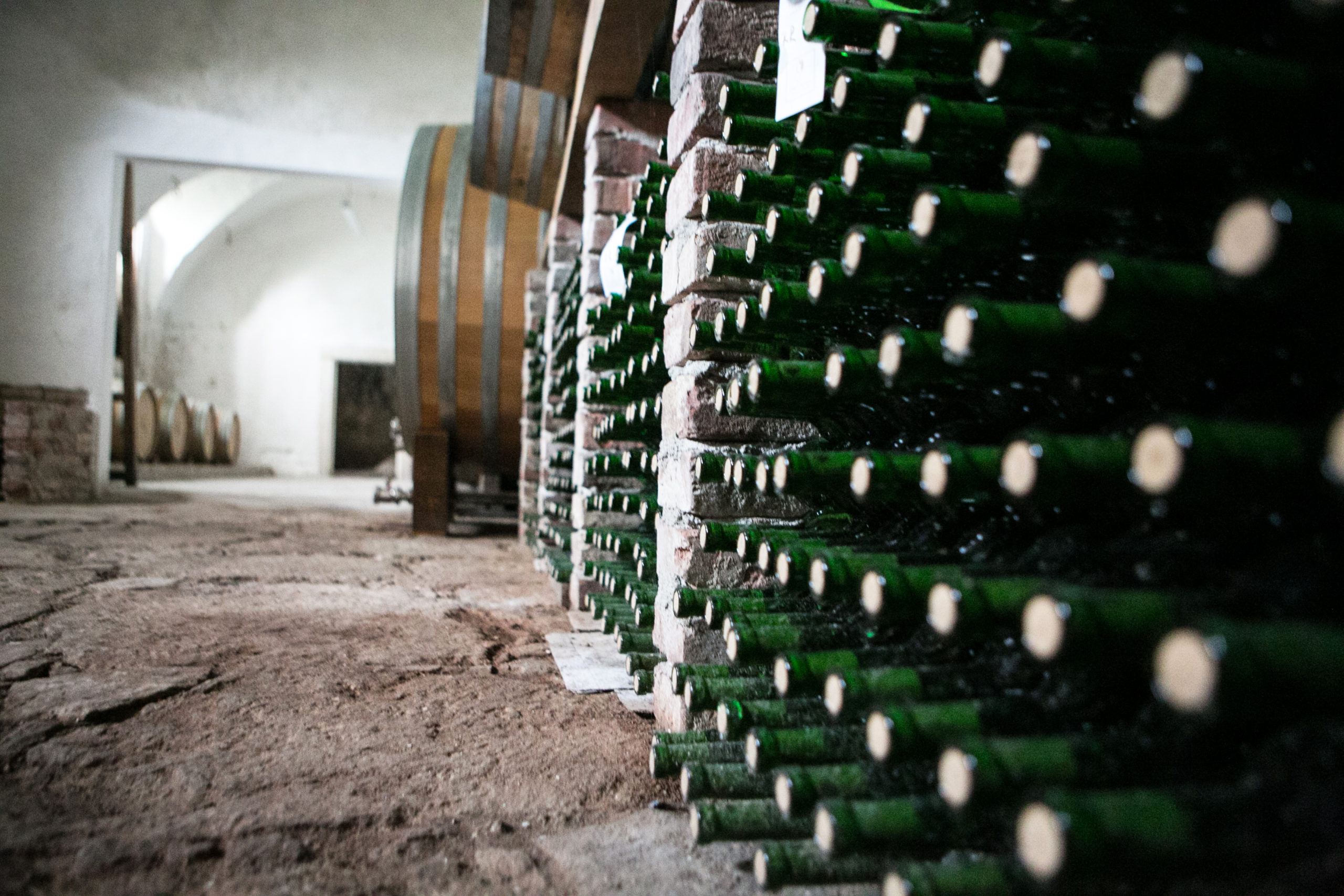If you want to learn on how to appreciate Czech wines, the first thing we recommend you is to drink the best of them!
But it also helps to be able to read the labels on the Czech wine bottles, should it be from Moravia or Bohemia.
Especially if you don’t read Czech !
Below are some tools to better understand the Czech wine classifications and state guidance.
There are 2 kinds of Czech wines’ classifications:
– by the amount of suger in the grape
– by its origin
1 – Czech wines are partly classified by the amount of sugar in the grape juice. This is expressed by the so called must weight. Must weight is a measure of the amount of sugar in grape juice (must), and thus indicates the amount of alcohol that could be produced if it is all fermented to alcohol, rather than left as residual sugar.
The quality of Czech wine is divided in 4 categories (low to high quality):
- Stolní víno – Table Wine
The lowest category of “Czech” wine, containing grapes originating from any country in the EU. - Moravské zemské víno / České zemské víno – Country wine
Wine produced from grapes only originating from the Czech Republic. The must-weight levels should be at least 14 °NM. - Jakostní víno – Quality wine
Wine produced from grapes grown in the Czech Republic within a single wine region. Only grape varieties that are listed in the State Register of Grape Varieties are allowed. The must weight levels must be atleast 15 °NM. - Jakostní víno s přívlastkem – Quality Wine with Special Attributes
On top of all requirements for Quality Wines, these wines have to originate from a single wine sub-region and the origin of the grapes, their sugar level, weight, grape variety or blend of varieties must be verified by the State Agricultural and Food Inspectorate. Wines in this category may have the following extra classifications:- Kabinetní víno –Kabinet wine
Wines produced from grapes with a must weight of at least 19°NM. These often are lighter and dry wines. - Pozdní sběr – Late Harvest
Wines produced from grapes with a must weight of at least 21°NM. These often are full, dry or semi-dry wines. - Výběr z hroznů – Special selection of grapesWines produced from grapes with a must weight of at least 24°NM. These often are full-bodied wine, with a higher alcohol percentage.
- Výběr z bobulí – Special selection of berries Wines produced from grapes that ripened over a very long period on the vine and with a must weight of at least 27°NM. These often are very full, semi-sweet or sweet wines.
- Výběr z cibéb – Special selection of botrytised berries
Wines produced from selected berries that have been affected by noble rot, with a must weight of at least 32 °NM. Because of the long ripening time the majority of these berries turn into raisins. These are very extractive and sweet wines. - Ledové víno – Ice wine
Wine produced from grapes that are still frozen while being picked at a maximum temperature of -7°C. The grapes have a must weight of at least 27°NM. The grapes are still frozen when being pressed, which results in very sweet wines. - Slámové víno – Straw wine
Wines produced from grapes that were dried for at least three months on straw mats or hung in a well-ventilated space. After drying, the must weight has to be at least 27°NM. The grapes may be pressed a month earlier if they have already reached a must level of at least 32°NM. Straw wines are very sweet.
- Kabinetní víno –Kabinet wine
Key: Wine sugar content
| Suché (dry) | wine with virtually no residual sugar or the barest minimum, barely detectable, sufficiently balanced with acidity |
| Polosuché (medium dry or off-dry) | wine that is only slightly sweetish |
| Polosladké (medium or semi-sweet) | wine with considerable residual-sugar, sweet tasting noticeably sweet |
| Sladké (sweet) | wine with high residual sugar, thoroughly sweet |
2 – Origin specification
A Czech wine label will typically specify the wine’s origin with one or more of the following terms:
- Vinařská oblast – (Region) e.g. Morava (Moravia)
- Vinařská podoblast – (Subregion) e.g. Velkopavlovická (Velké Pavlovice)
- Vinařská obec – (Village)
- Trať – (Vineyard)
VOC (Wine of Original Cerfication)
VOC wines are produced from typical varieties in a defined smaller area. It has to be approved by the Association of the wine makers.
Let’s meet in Prague to taste, enjoy and discover Czech wines !



Trackbacks
elavil aged cheese
elavil aged cheese
mestinon v 60
mestinon v 60
diclofenac epolamine topical patch
diclofenac epolamine topical patch
imitrex not working for migraine
imitrex not working for migraine
why take cilostazol on an empty stomach
why take cilostazol on an empty stomach
amitriptyline ibs
amitriptyline ibs
mebeverine in patients with the irritable colon syndrome double blind study
mebeverine in patients with the irritable colon syndrome double blind study
can i purchase cheap pyridostigmine without rx
can i purchase cheap pyridostigmine without rx
prophylactic indomethacin for preterm infants a systematic review and meta-analysis
prophylactic indomethacin for preterm infants a systematic review and meta-analysis
imuran low dose chemo
imuran low dose chemo
imdur emedicine
imdur emedicine
piroxicam tablets uses
piroxicam tablets uses
maxalt bijwerkingen
maxalt bijwerkingen
what is rizatriptan
what is rizatriptan
lioresal 10 mg bijsluiter
lioresal 10 mg bijsluiter
meloxicam 15 mg riesgos
meloxicam 15 mg riesgos
can you take sumatriptan with prednisone
can you take sumatriptan with prednisone
baclofen tablets bp
baclofen tablets bp
skin rash azathioprine
skin rash azathioprine
mobic blood in stool
mobic blood in stool
how to buy generic ketorolac without dr prescription
how to buy generic ketorolac without dr prescription
what are periactin tablets for
what are periactin tablets for
cyproheptadine side effects in toddlers
cyproheptadine side effects in toddlers
where to get generic toradol prices
where to get generic toradol prices
is zanaflex a strong muscle relaxer
is zanaflex a strong muscle relaxer
artane user reviews
artane user reviews
active ingredients in tizanidine
active ingredients in tizanidine
anatoliy-alekseyevich-derkach.ru
anatoliy-alekseyevich-derkach.ru